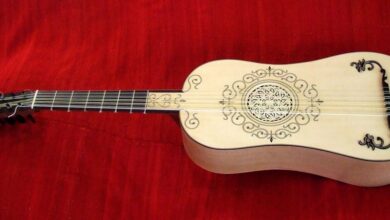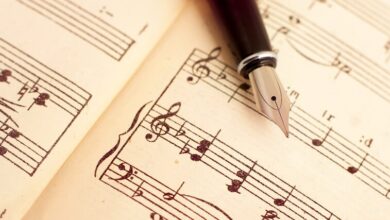musical notes on the stave

In order to be a professional musician, you first have to study the basics of music. However, this is not as difficult as it seems and it only takes a little reading and practice to achieve incredible results. Knowing the musical notes and their position on the staff could be a good way to start.
Music is probably one of the most beautiful things in the world. The melodious sound of each musical note and how when combined with another it creates a perfect harmony makes many want to go from listening to music to starting to create it and, for this, it is necessary to study.
The first thing you need to do is learn about the musical note scale and how it is represented on the musical staff. Otherwise, practicing to improve your skills would be practically impossible.
Because of this, here you can find a small initiation guide to understand the basic concepts of music, starting with the function of the notes on the staff .
What is the pentagram?
The staff is a set of five horizontal lines on which the musical symbols that make up the score of a composition are written. That is, the notes, the key to be used, the pauses, the tempo, among other things.
What and what are musical notes?
Musical notes are the symbols that identify each sound that can be made in the musical scale, with the voice or with an instrument.
In a staff with musical notes, the identification of the sounds is given based on the key in which the musical piece is composed and the height in which the note has been written. Hence the importance of knowing how to read the musical scale of notes.
The diatonic scale, which is the most common, is categorized into 7 musical notes: Do Re Mi Fa Sol La Si. These are considered the base notes, however, they are not all musical notes. This is because these base sounds can be slightly altered to produce variants that really differentiate the experience that each melody provokes. This is usually common in advanced compositions, which always have sharp and flat sounds. However, to start, just focus on the first 7.
You must keep in mind that the notes can be presented with other names, as is the case of the American musical notes and chords cipher, which identifies the Do, Re, Mi scale with the following sequence: C, D, E, F, G, A, B. Knowing this, you are unlikely to be confused when you come across a composition that has used this cipher.

Musical notes and the stave
When you see a score on the staff for the first time, you probably won’t understand much. However, if you break everything down into parts, all the symbols can start to take on meaning.
- Key
To begin with, the key to the composition must be recognized. This is known by visualizing the first symbol on the staff. The keys are what determine the position of the notes in each of the lines of a staff.
All the keys have a different figure; however, to begin with, you only need to worry about the treble clef, as this is the one most often used to play melodies on instruments such as flutes or guitars.
In this key, the diatonic scale starts in increasing order from the bottom of the staff lines, scaling progressively from the lowest to the highest sound. That is, from Do to Si.
Remember that you may see variations, such as symbols that come with a # sign or a “b” before the note. These are the alterations. The “b” refers to the flats, while the “#” represents the sustained sounds.
- Time
In order to perfectly execute a musical composition, it is necessary to take into consideration the time and measure of the piece. Otherwise, it is almost impossible to find the right rhythm to the score.
You will be able to notice how, on certain occasions, two musical notes appear on the same line during the composition; however, these do not have the same design. While one of them is completely black, another has a white fill, for example. In this case, this differentiation refers to the representation of musical or rhythmic figures.

The same note can be played for different lengths depending on what the composition calls for, and the unique “pattern” of each is what marks the time within a bar.
Taking 4/4 time as an example, the rhythmic pyramid is identified in this way:
1) Round: It is the rhythmic figure identified with a single circle and without filling. This note represents a duration of 4 beats.
2) White: This rhythmic figure has an unfilled circle accompanied by a vertical line that complements it. This note represents a duration of 2 beats.
3) Black: This is the best known musical figure and is identified with a filled circle and a vertical line. It is a note that represents a duration of 1 beat.
4) Eighth notes: Eighth notes are displayed as quarter notes joined by a horizontal line above. They last half the time of quarter notes.
5) Sixteenth notes: Lastly, sixteenth notes are drawn like eighth notes, but with a double horizontal line. They represent half the time of the eighth notes.
Understanding this in a more practical way is simple. Basically, you will need to take an instrument, such as a guitar, and play a musical note while doing a rhythmic count to 4. This count will mark the beat.
To begin, strike a string and let its sound last for the entirety of your count, without interruption. This will represent a round note, and with it, the 4/4 beat in the rhythmic pyramid begins.
Now, in the time it takes you to count to four, jingle the string twice. This will represent the white notes.
If you jingle the string four times on the count, you will have followed the black pattern.
Similarly, if you sound the string eight or sixteen times on the count of four, you will have kept an eighth note and sixteenth note time, respectively.
If you already know the name of the musical notes, their representation and how their times are marked, then all you have to do is pick up an instrument and continue exploring music theory to expand your knowledge and improve your skills. Remember that, although it seems difficult at first, you only need to dedicate time to this art to master it.



